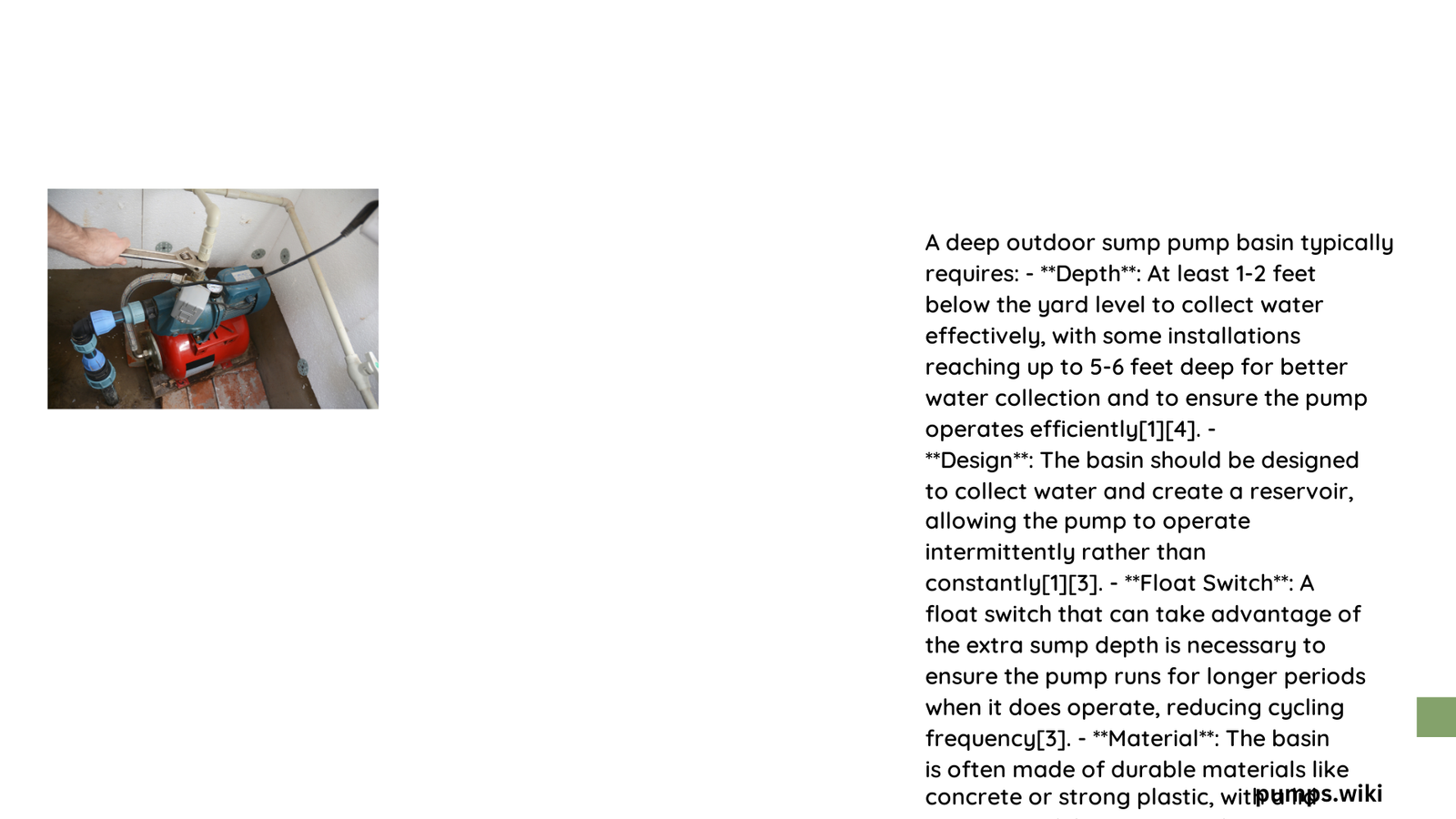A deep outdoor sump pump basin is a critical infrastructure component for managing excess water around residential and commercial properties. This comprehensive solution prevents water accumulation, protects foundations, and mitigates potential water damage through strategic design, proper material selection, and precise installation techniques that ensure efficient water drainage and landscape integration.
What Are the Critical Dimensions for a Deep Outdoor Sump Pump Basin?
Basin Depth Requirements
When designing a deep outdoor sump pump basin, precise dimensional considerations are paramount:
| Basin Depth | Trench Depth | Recommended Configuration |
|---|---|---|
| 24 inches | 12 inches | Minimum standard setup |
| 30 inches | 16 inches | Enhanced water management |
| 36 inches | 20 inches | Advanced drainage system |
Key Dimensional Factors:
– Minimum depth: 12 inches below lowest trench point
– Typical width range: 18″ to 24″
– Height variations: 24″, 30″, 36″, 40″
Why Choose a Large Outdoor Sump Pump Basin?
Selecting an appropriately sized basin offers multiple advantages:
- Enhanced Water Capacity
- Reduces pump cycling frequency
- Minimizes mechanical wear
-
Extends pump operational lifespan
-
Improved System Efficiency
- Shorter discharge lines
- Reduced head pressure
- Faster water evacuation
What Materials Work Best for Deep Outdoor Sump Pump Basins?

Material Comparison
Polyethylene Basins:
– Cost-effective ($50-$200)
– Lightweight
– Corrosion-resistant
– Easy installation
– Typical wall thickness: 1/4 inch
Fiberglass Basins:
– Higher durability
– Greater environmental resistance
– Price range: $100-$500
– Wall thickness: 1/2 inch or more
– Suitable for challenging terrain
How to Integrate Landscape Design with Sump Pump Basin?
Strategic Landscape Planning
Plant Selection Criteria:
– Flood-tolerant root systems
– Deep root structures
– Examples:
– Willow trees
– Dogwood varieties
– Native ornamental grasses
Drainage Optimization Techniques:
– Install French drains
– Create sloped trenches
– Use gravel for enhanced water flow
– Maintain clear basin surroundings
What Installation Considerations Ensure Optimal Performance?
Professional Installation Strategies
Pre-Installation Checklist:
– Conduct thorough site assessment
– Verify soil composition
– Measure precise drainage requirements
– Plan discharge line routing
– Ensure proper basin elevation
Installation Best Practices:
– Dig slightly oversized basin hole
– Level basin foundation
– Connect appropriate piping
– Test water flow dynamics
– Implement erosion control measures
What Maintenance Protocols Extend Basin Lifespan?
Proactive Maintenance Approach
Regular Inspection Points:
– Check basin structural integrity
– Monitor water accumulation patterns
– Verify pump functionality
– Clear debris around basin
– Assess landscape drainage efficiency
Seasonal Maintenance Schedule:
– Spring: Comprehensive system check
– Summer: Monitor water levels
– Fall: Clear potential blockages
– Winter: Protect against freezing
Conclusion
A deep outdoor sump pump basin represents a sophisticated water management solution requiring careful planning, precise implementation, and ongoing maintenance. By understanding dimensional requirements, material selections, and integration strategies, property owners can develop robust drainage systems that protect infrastructure and enhance landscape aesthetics.
